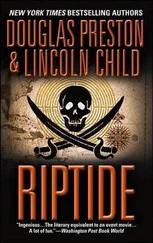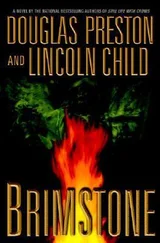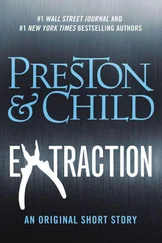Douglas Preston - Mount Dragon
Здесь есть возможность читать онлайн «Douglas Preston - Mount Dragon» весь текст электронной книги совершенно бесплатно (целиком полную версию без сокращений). В некоторых случаях можно слушать аудио, скачать через торрент в формате fb2 и присутствует краткое содержание. Город: New York, Год выпуска: 1996, ISBN: 1996, Издательство: A Tor Book; Published by Tom Doherty Associates, Inc., Жанр: Триллер, на английском языке. Описание произведения, (предисловие) а так же отзывы посетителей доступны на портале библиотеки ЛибКат.
- Название:Mount Dragon
- Автор:
- Издательство:A Tor Book; Published by Tom Doherty Associates, Inc.
- Жанр:
- Год:1996
- Город:New York
- ISBN:0-812-56437-5
- Рейтинг книги:3 / 5. Голосов: 1
-
Избранное:Добавить в избранное
- Отзывы:
-
Ваша оценка:
- 60
- 1
- 2
- 3
- 4
- 5
Mount Dragon: краткое содержание, описание и аннотация
Предлагаем к чтению аннотацию, описание, краткое содержание или предисловие (зависит от того, что написал сам автор книги «Mount Dragon»). Если вы не нашли необходимую информацию о книге — напишите в комментариях, мы постараемся отыскать её.
Mount Dragon — читать онлайн бесплатно полную книгу (весь текст) целиком
Ниже представлен текст книги, разбитый по страницам. Система сохранения места последней прочитанной страницы, позволяет с удобством читать онлайн бесплатно книгу «Mount Dragon», без необходимости каждый раз заново искать на чём Вы остановились. Поставьте закладку, и сможете в любой момент перейти на страницу, на которой закончили чтение.
Интервал:
Закладка:
He shook his head. “There is an old proverb: ‘Nature is a hanging judge.’ The Novo-Druzhina incident nearly hanged the human race. And yet, as I speak, other companies across the globe are tinkering with viruses, exchanging genetic material between viruses, bacteria, plants, and animals indiscriminately, without any thought to the ultimate consequences.
“Of course, today’s cutting-edge labs in Europe and America are a far cry from 1985 Siberia. Should that reassure us? Quite the opposite.
“The scientists in Novo-Druzhina were doing simple manipulations of a simple virus. They accidentally created a catastrophe. Today—barely a stone’s throw from this hall— much more complicated experiments are being done with infinitely more exotic, infinitely more dangerous viruses.
“Edwin Kilbourne, the virologist, once postulated a pathogen he called the Maximally Malignant Virus. The MMV would have, he theorized, the environmental stability of polio, the antigenic mutability of influenza, the unrestricted host range of rabies, the latency of herpes.
“Such an idea, almost laughable then, is deadly serious now. Such a pathogen could be, and maybe is being , created in a laboratory somewhere on this planet. It would be far more devastating than a nuclear war. Why? A nuclear war is self-limiting. But with the spread of an MMV, every infected person becomes a brand new walking bomb . And today’s transmission routes are so widespread, so quickly achieved by international travelers, it only takes a few carriers for a virus to go global.”
Levine stepped around the podium to face the audience. “Regimes come and go. Political boundaries change. Empires grow and fall. But these agents of destruction, once unleashed, last forever. I ask you: should we allow unregulated and uncontrolled experiments in genetic engineering to continue in laboratories around the world? That is the real question raised by Strain 232.”
He nodded, and the lights came back up. “There will be a full report of the Novo-Druzhina incident in the next issue of Genetic Policy ,” he said, turning to gather his papers.
The spell broken, the students stood up and began collecting their things, moving in a rustling tide toward the exits. The reporters at the back of the hall had already left to file their stories.
A young man appeared at the top of the hall, pushing his way through the milling crowd. Slowly, he made his way down the central steps toward the podium.
Levine glanced up, then looked carefully left and right. “I thought you were told never to approach me in public,” he said.
The youth came forward, held Levine’s elbow, and whispered urgently in his ear. Levine stopped loading papers into his briefcase.
“Carson?” he asked. “You mean that bright cowboy fellow who was always interrupting my lectures to argue?”
The man nodded his head.
Levine fell silent, his hand on the briefcase. Then he snapped it shut.
“My God,” he said simply.

Carson looked out across the motor pool toward a sweeping cluster of white buildings which rose abruptly from the desert sands: curves, planes and domes thrusting from the ground. The stark placement of the buildings in the desert terrain, along with a total absence of landscaping, gave the laboratory a Zen-like feeling of purity and emptiness. Glassed-in walkways connected many of the buildings, forming crisscrossing patterns.
Singer led Carson along one of the covered walkways. “Brent is a great believer in architecture as a means of inspiring the human spirit,” he said. “I’ll never forget when that architect, what’s-his-name—Guareschi—came from New York to ‘experience’ the site.”
Singer chuckled softly.
“He arrived in tasseled loafers and a suit, with this silly straw hat. But the guy was game, I’ll give him that. He actually camped out for four days before he got heatstroke and hightailed it back to Manhattan.”
“It’s beautiful,” Carson said.
“It is. Despite his bad experience, the man did manage to capture the spareness of the desert. He insisted there be no landscaping. For one thing, we didn’t have the water. But he also wanted the complex to look as if it was part of the desert, and not imposed on it. Obviously, he never forgot the heat. I think that’s why everything’s white: the machine shop, the storage barracks—even the power plant.” He nodded toward a long building with gracefully curving rooflines.
“That’s the power plant?” Carson asked in disbelief. “It looks more like an art museum. This place must have cost a fortune.”
“Several fortunes,” Singer said. “But back in ’85, when construction began, money wasn’t much of an issue.” He ushered Carson toward the residency compound, a series of low curvilinear structures gathered together like pieces of a jigsaw puzzle. “We’d obtained a nine-hundred-million-dollar contract through DATRADA.”
“Who?”
“Defense Advanced Technology, Research and Development Administration.”
“Never heard of it,” said Carson.
“It was a secret Defense Department agency. Disbanded after the Reagan years. We all had to sign a lot of formal loyalty documents and the like. Secret clearance, top-secret clearance, you name it. Then they investigated us—boy, did they investigate. I got calls from ex-girlfriends twenty years removed: ‘A bunch of suits were just here asking a lot of questions about you. What the hell did you do now, Singer?’ ” He laughed.
“So you’ve been here from the beginning,” Carson said.
“That’s right. Only the scientists have six-month tours. I guess they figure I don’t do enough real work to get burnt out.” He laughed. “I’m the old-timer here, me and Nye. And a few others, old Pavel and the fellow you just met, Mike Marr. Anyway, it’s been much nicer since we went civilian. The military boys were a pain in the posterior.”
“How did the changeover happen?” Carson asked.
Singer steered him through the smoked-glass door of a structure on the far side of the residency compound. A river of air-conditioning washed over them as the door hissed shut. Carson found himself in a vestibule, with slate floors, white walls, and taupe furniture. Singer led him toward another door.
“At first, we did strictly defense research. That’s how we got these land parcels in the Missile Range. Our job was to look for vaccines, countermeasures and antitoxins to presumed Soviet biological weapons. When the Soviet Union fell apart, so did our brief. We lost the contract in 1990. We almost lost the lab, too, but Scopes did some quick lobbying behind closed doors. God knows how he did it, but we were able to get a thirty-year lease under the Defense Industry Conversion Act.”
Singer opened a door into a long laboratory. A series of black tables gleamed under fluorescent lights. Bunsen burners, Erlenmeyer flasks, glass tubing, Stereozoom microscopes and various other low-tech equipment sat in neat, spotless rows.
Carson had never seen a lab look so clean. “Is this the low-level facility?” he asked incredulously.
“Nope,” Singer said. “Most of the real work is done on the inside, our next stop. This is just eye candy for congressmen and military brass. They expect to see an upscale version of their old university chem lab, and we give it to them.”
They passed into another, much smaller room. A large, gleaming instrument sat in its center. Carson recognized it instantly.
“The world’s best microtome: the Scientific Precision ‘Ultra-Shave,’ ” Singer said. “That’s what we call it, anyway. It’s all computer controlled. A diamond blade that cuts a human hair into twenty-five hundred sections. Widthwise. This one’s just for show, of course. We’ve got two identical units operating on the inside.”
Читать дальшеИнтервал:
Закладка:
Похожие книги на «Mount Dragon»
Представляем Вашему вниманию похожие книги на «Mount Dragon» списком для выбора. Мы отобрали схожую по названию и смыслу литературу в надежде предоставить читателям больше вариантов отыскать новые, интересные, ещё непрочитанные произведения.
Обсуждение, отзывы о книге «Mount Dragon» и просто собственные мнения читателей. Оставьте ваши комментарии, напишите, что Вы думаете о произведении, его смысле или главных героях. Укажите что конкретно понравилось, а что нет, и почему Вы так считаете.












